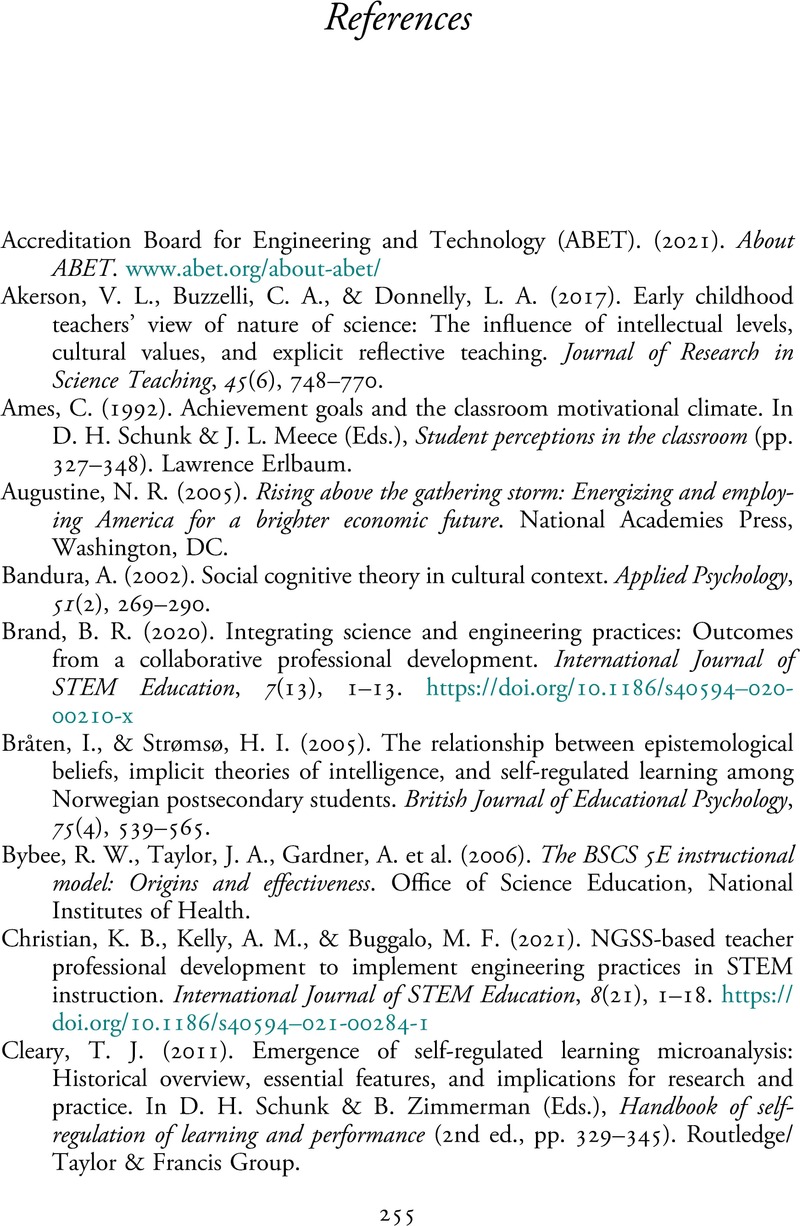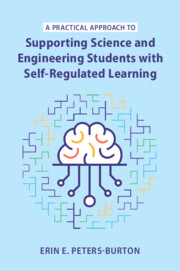Book contents
- A Practical Approach to Supporting Science and Engineering Students with Self-Regulated Learning
- A Practical Approach to Supporting Science and Engineering Students with Self-Regulated Learning
- Copyright page
- Dedication
- Contents
- Figures
- Tables
- Acknowledgments
- Part I Foundations
- Part II Engaging in Disciplinary Tasks in Science and Engineering
- Part III Educational Research and Teacher Education Applications
- References
- Index
- References
References
Published online by Cambridge University Press: 02 November 2023
- A Practical Approach to Supporting Science and Engineering Students with Self-Regulated Learning
- A Practical Approach to Supporting Science and Engineering Students with Self-Regulated Learning
- Copyright page
- Dedication
- Contents
- Figures
- Tables
- Acknowledgments
- Part I Foundations
- Part II Engaging in Disciplinary Tasks in Science and Engineering
- Part III Educational Research and Teacher Education Applications
- References
- Index
- References
Summary

- Type
- Chapter
- Information
- A Practical Approach to Supporting Science and Engineering Students with Self-Regulated Learning , pp. 255 - 261Publisher: Cambridge University PressPrint publication year: 2023



